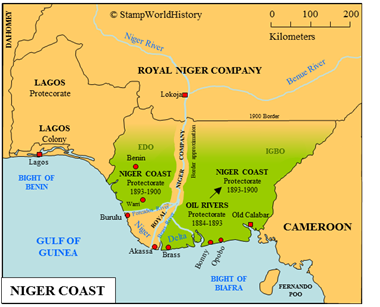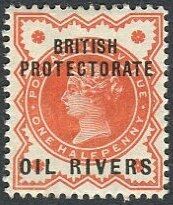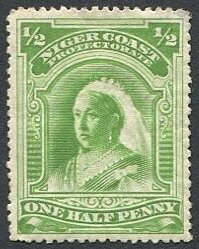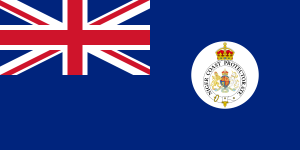
Niger Coast
Quick reference
General issues: Oil Rivers British protectorate 1892-1893, Niger Coast British protectorate 1894-1900
Country name on general issues: Oil Rivers, Niger Coast
Special issues: Local issues Old Calabar, Opobo 1894
Currency: 1 Pound = 20 Shilling, 1 Shilling =12 Pence 1892-1900
Population: No period statistics available
Note: Philatelic tradition has it to combine these two entities – all four worldwide catalogs do so. In writing just one profile I have followed this tradition.
Political history Niger Coast
Niger Coast is located in western Africa. The population consists of different Niger-Congo peoples – large population groups being the Ebo and the Igbo. The first Europeans to explore what would become Niger Coast are the Portuguese in the 15th century. Trade posts are set up from the 16th century by several European nations and companies – the trade mainly being the slave trade. The settlement of Old Calabar[1]The current Calabar. develops as one of the main trading centers. By the mid 19th century, the British focus their interest on the lower Niger basin. In 1862, the colony of Lagos is established to the west of the future Niger Coast. Trade is more and more dominated by the British – the trade, since the abolition of the slave trade, having become palm oil trade.
By the end of the 19th century, the ‘Scramble for Africa’ is at its height. To secure their trade interests and to prevent the French and the Germans from moving into the lower Niger basin, the British rapidly increase their efforts in the region. In 1884, the British proclaim the Oil Rivers protectorate over the Niger Delta and the coastal region east of the Niger Delta to Old Calabar. The name ‘Oil Rivers’ is derived from the palm oil trade. At the 1885 Berlin conference – where the colonial powers divide their respective spheres of interest in Africa – Great Britain claims and is awarded the entire lower Niger basin[2]The current Nigeria, then called the Niger Districts. including the Oil Rivers protectorate.
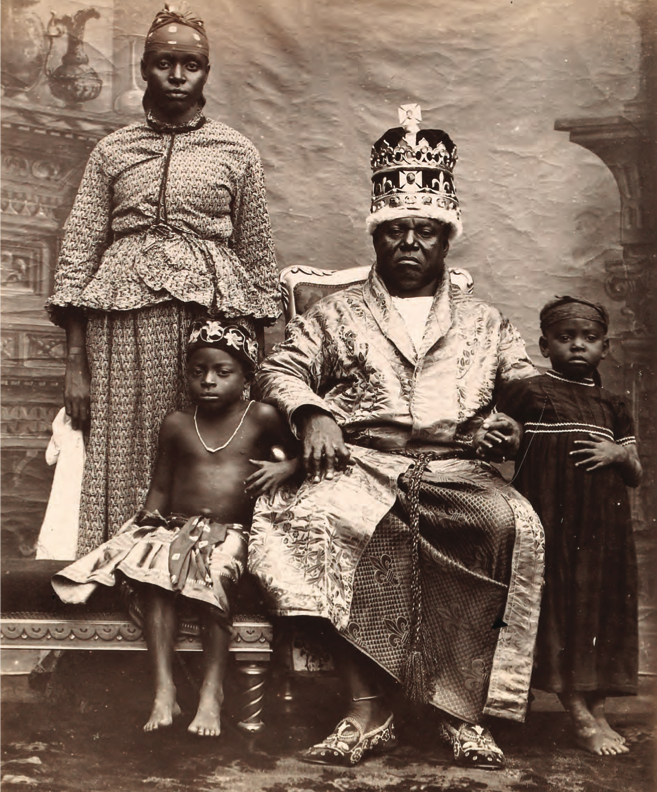
1895 – King Duke IX 1895, king of Old Calabar. The indigenous name for this city state is Akwa Akpa. The traditional rulers are recognized until today in modern Nigeria.
In 1886, the development of much of the Niger Districts is contracted out to the Royal Niger Company – a chartered company. Borders at the time are not exactly defined – the interests of the Royal Niger Company at times conflict with the interests of the administration of the Oil Rivers protectorate. In 1893, the administration of the Niger Districts is further defined. The Oil Rivers protectorate is renamed Niger Coast protectorate. The territory of the Niger Coast protectorate is extended to also include: the coastal region west of the Niger Delta up to the border of the Lagos protectorate that has been established in 1887, and the lands to the north up to the headquarters of the Royal Niger Company in Lokoja. The Niger Coast protectorate is cut in two by the Niger Territories under the administration of the Royal Niger Company: the part of the Niger Delta between the Forcados and the Brasse Rivers and to the north a strip along the Niger River ‘ten hours travel’ wide on either side of the river. Exact borders with the territories under the administration of the Royal Niger Company further to the north of the protectorate have yet to be defined.
Effective British rule is at the time still limited to the coastal region and the banks of the Niger River. As it is a prerequisite for continued recognition of territorial claims to establish effective colonial rule, the British set to work. In the western part of the Niger Coast protectorate the powerful Edo kingdom of Benin – centered around the city of Benin – is conquered in a campaign in 1896/1897. In the eastern part of the protectorate it will take the British longer to fully establish themselves : the Aro Confederacy – a federation of Igbo kingdoms – will be opposed to British rule until 1902. In the parts of the protectorate under British control, the British would establish indirect rule through the existing royalty.
As it proved that the Royal Niger Company was not the proper vehicle to establish British rule, the charter was revoked in 1899, and in 1900 the territories administered by the Royal Niger Company reverted to the British government. The Niger Coast protectorate and the Niger Territories were joined to form the protectorate of Southern Nigeria to the north of which the protectorate of Northern Nigeria was established. In 1906, Lagos is joined to Southern Nigeria to form the colony and protectorate of Southern Nigeria. In 1914, Northern and Southern Nigeria are joined to form the colony and protectorate of Nigeria. Currently the former Niger Coast protectorate is divided into a number of states in present day Nigeria.
Postal history Niger Coast
The first post office, in what is then the Oil Rivers protectorate, is opened in 1891 in Old Calabar. The first stamps used are the stamps of Great Britain. The first stamps for the Oil Rivers protectorate are issued in 1892 – British stamps overprinted ‘British Protectorate Oil Rivers’. In 1893, a number of hand stamped provisionals with a new face value are issued – all in the high to very high catalog value ranges.
The first set issued for the Niger Coast protectorate appears in 1894. A set prepared for use in the Oil Rivers Protectorate – hence inscribed ‘Oil Rivers Protectorate’. The ‘Oil Rivers’ inscription is obliterated and a ‘Niger Coast’ inscription is added. Further sets – now inscribed ‘Niger Coast Protectorate’ – are issued in 1894 and 1897. Local provisionals with a new face value are issued in Old Calabar and Opobo in 1894 – again with catalog values in the higher range.
The stamps of the Niger Coast protectorate are, from 1901, superseded by the issues of the Southern Nigeria protectorate – with the exception of a period in 1902 when, during shortages, the stamps of the Niger Coast protectorate have again been used. The stamps of the Southern Nigeria protectorate have been superseded by the issues of the Nigeria colony and protectorate from 1914 and independent Nigeria from 1963.
In the Niger Territories, up to Lokoja – administered by the Royal Niger Company – stamps of Great Britain are used from 1890 to 1900 canceled with company hand stamps.
Album pages
← Previous page: NigerNext page: Nigeria →

